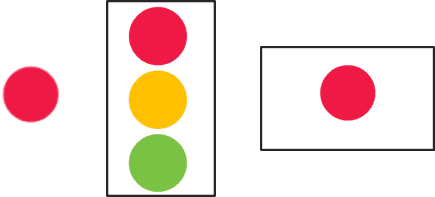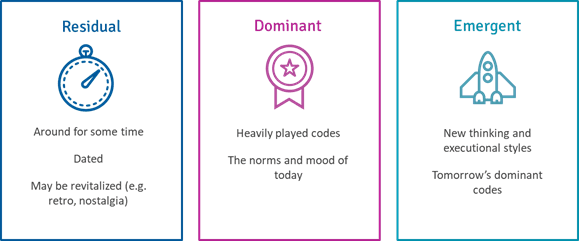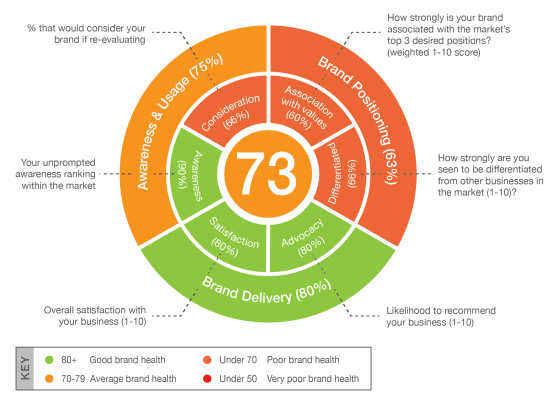Semiotics is the study of signs, symbols and meanings and the cultural context they sit in. It looks at things like a sign’s colour, physical space, sound and behaviours… all the things that shape how we perceive an object; and all the things that connect with us intuitively, rather than logically.
As an example, a red dot could signify different things to different people. Some might think of love, whilst others danger. If we change the context of the red dot, then this influences our interpretation. As in the diagram below, putting a red dot next to amber and green dots is associated with a stop sign, whilst placing the red dot on a white rectangle makes us think of Japan and its flag.

So how does this relate to branding research?
Semiotics allows us to understand the ‘space’ in which a brand sits, and what the brand stands for in the eyes of the world. The meaning we apply to the signs can change with time, as cultures adapt. Semiotics identifies the dominant codes that exist with your brand and classifies it in one of three ways:

Semiotics analysis of a brand involves gathering a wide range of materials – anything from the company website, sales brochures, uniforms, office spaces, conference stands, business cards… Any part of the visual identity of your brand! As well as your own company’s brand, your competitors’ materials that are available can be analysed for comparison too.
By doing semiotics, we can add an extra level of understanding to how the brand sits in its marketplace, and cultural patterns that might affect this in future. This type of analysis can be particularly useful if you are looking to refresh your brand identity or are in the process of rationalising your brand portfolio or architecture. Semiotics allows us to make recommendations on your brand’s look and feel, that can resonate with your target market on both a functional and emotional level.



